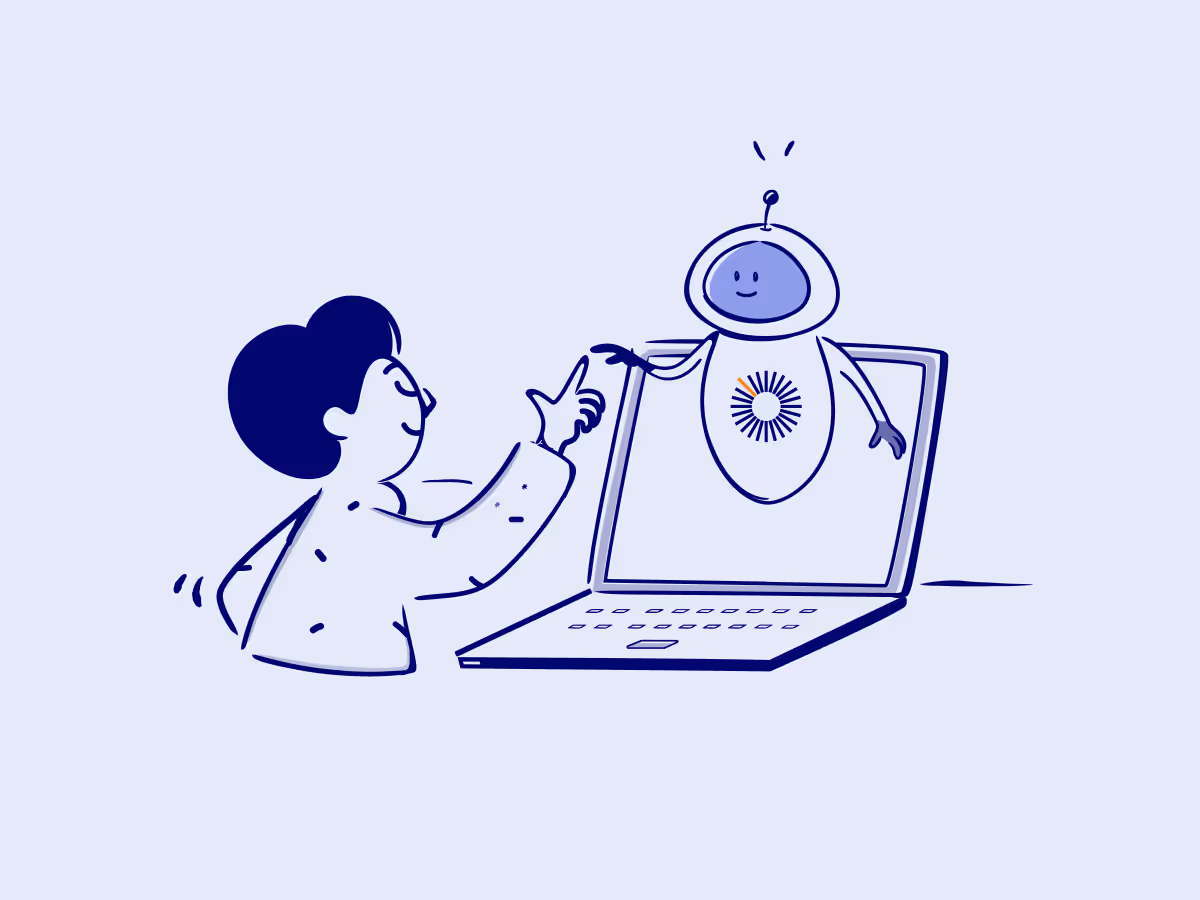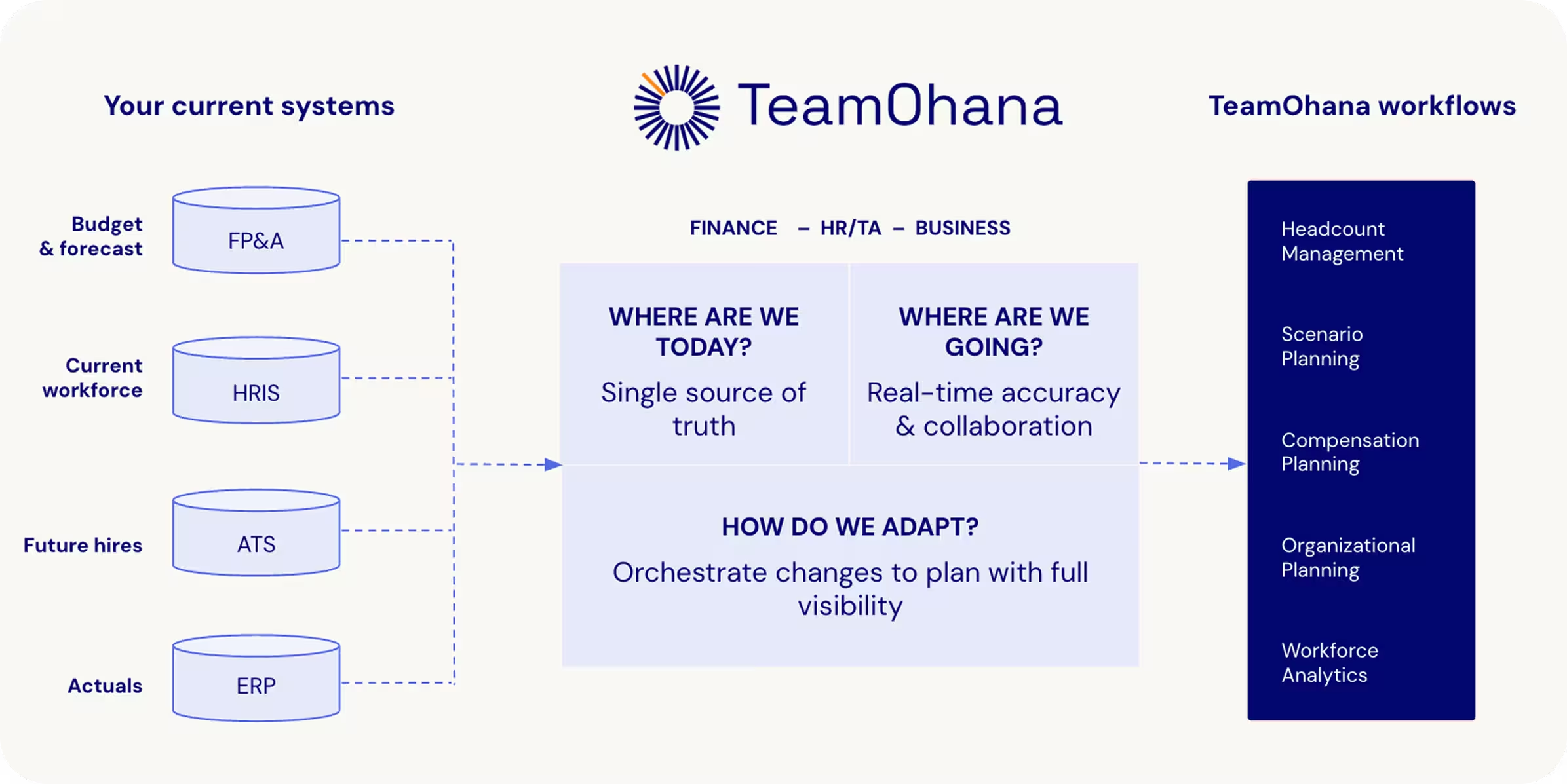What the Workday of tomorrow will look like

In this article
Never miss new content
For years, enterprise HR and Finance systems have promised to bring order to workforce chaos. But the truth is, they were built for a world that no longer exists.
Back when change happened quarterly, when hiring plans were slow-moving, and when compliance was the only North Star, systems like Workday were sufficient. But today, workforce planning isn’t static. You can’t set your headcount plan at the start of the new year and leave it untouched for even a quarter.
Workforce management today is a highly dynamic process tied to business strategy that changes monthly, even weekly. And the software we’ve relied on simply hasn’t kept pace.
Workday didn’t break. But the world around it has changed. The future demands a new kind of workforce planning platform—enter TeamOhana.
Legacy systems weren’t built for modern velocity
Workday is an excellent system of record, but it’s just that—a filing cabinet. It was built for compliance, process control, and clean data storage. But like many legacy systems, it was never meant to facilitate collaboration or actually help businesses scale in a competitive market.
Today’s workforce decisions need to happen at warp speed. Department leaders need to reforecast hiring plans mid-quarter, model scenarios in minutes, and make trade-offs between cost and growth on the fly, sometimes even during a board meeting.
But you can’t achieve this kind of velocity when you’re working with:
- A clunky UI that frustrates managers and requires training just to set up a promotion or internal transfer
- A byzantine back-end that needs multiple full-time Workday admins to keep it alive
- A system so rigid that companies spend hundreds of thousands on consultants just to update a workflow or compensation cycle
Workday is a powerful data vault. But you can’t manage a workforce or scale a company with a filing system; you need a fully functional mission control system for that.
The future lies in collaborative workforce intelligence
The next generation of workforce planning technology won’t just store data, it will drive decisions. It won’t just reflect org structure, it will adapt to it in real time. And it won’t just track changes, it will recommend them.
We call this shift a move from a “system of record” to a system of action.
In a system of action:
- Finance, HR, and People leaders work from a shared source of truth
- Hiring managers are empowered to model their own plans
- AI agents do the grunt work of reconciliation, surfacing insights, and streamlining approvals
- Decisions are tracked, auditable, and faster to make
This is the heart of collaborative workforce intelligence. And it’s what we’re building at TeamOhana.
TeamOhana as the system of action
We’re carving out an entirely new function within the workforce management tech stack because business today demands it. At TeamOhana, we’re not dressing up legacy tech in a new UI. We’re rebuilding from first principles.
The future of workforce planning doesn’t need another point solution. It needs a purpose-built mission control center.
We call it a system of action—an AI-powered connected layer that turns planning into execution.
- Where headcount planning is live, not static
- Where workflows are autonomous, not manual
- Where org design, compensation, and hiring decisions are connected, not siloed in different systems
- Where AI agents do the grunt work of reconciliation, role-matching, approvals, and insight delivery.
We’ve got big plans for the future, but we started with headcount planning because it is the beating heart of every business.
How TeamOhana already integrates with Workday
We understand that redefining the status quo doesn’t happen overnight. And we don’t think anyone needs to stop using Workday, at least for now.
But people are a company’s most valuable and expensive asset. And if you want to not just survive, but thrive in a competitive market, Workday alone won’t cut it. You need to manage your workforce with the same rigor as your capital allocation. To do this, you need a workforce intelligence platform.
Use Workday for what it does best—storing payroll, benefits, and core HRIS records.
Then use TeamOhana to actually get sh*t done:
- Headcount & workforce management—Finance, HR, and Talent can align hiring, budget, and org structure from one user-friendly platform
- Scenario modeling—Empower everyone from Leadership to Hiring Managers to run headcount scenarios in minutes with only the information they need, thanks to access controls and enterprise-grade security
- Compensation planning—Run faster merit cycles, standardize your comp structure and pay equity with better visibility
- Organizational planning—Model org design with simple drag-and-drop functionality
- Workforce analytics—Get the workforce analytics you actually need in real-time without having to log into Workday and multiple other systems of record.

Did I mention integration takes just a couple of minutes?
Staking our claim
We’re making a big bet.
That in the next 5 years, companies will stop tolerating expensive systems that slow them down.
That the next wave of enterprise software will be defined not by the data it stores, but by the decisions it powers. That velocity will beat process, clarity will beat complexity, and action will beat recordkeeping.
TeamOhana is leading this shift, with an AI-native platform designed to automate workflows, deliver insights, and eliminate the admin burden that’s crushing today’s people teams.
The next Workday won’t look like Workday.
It will look like TeamOhana.

.svg)



